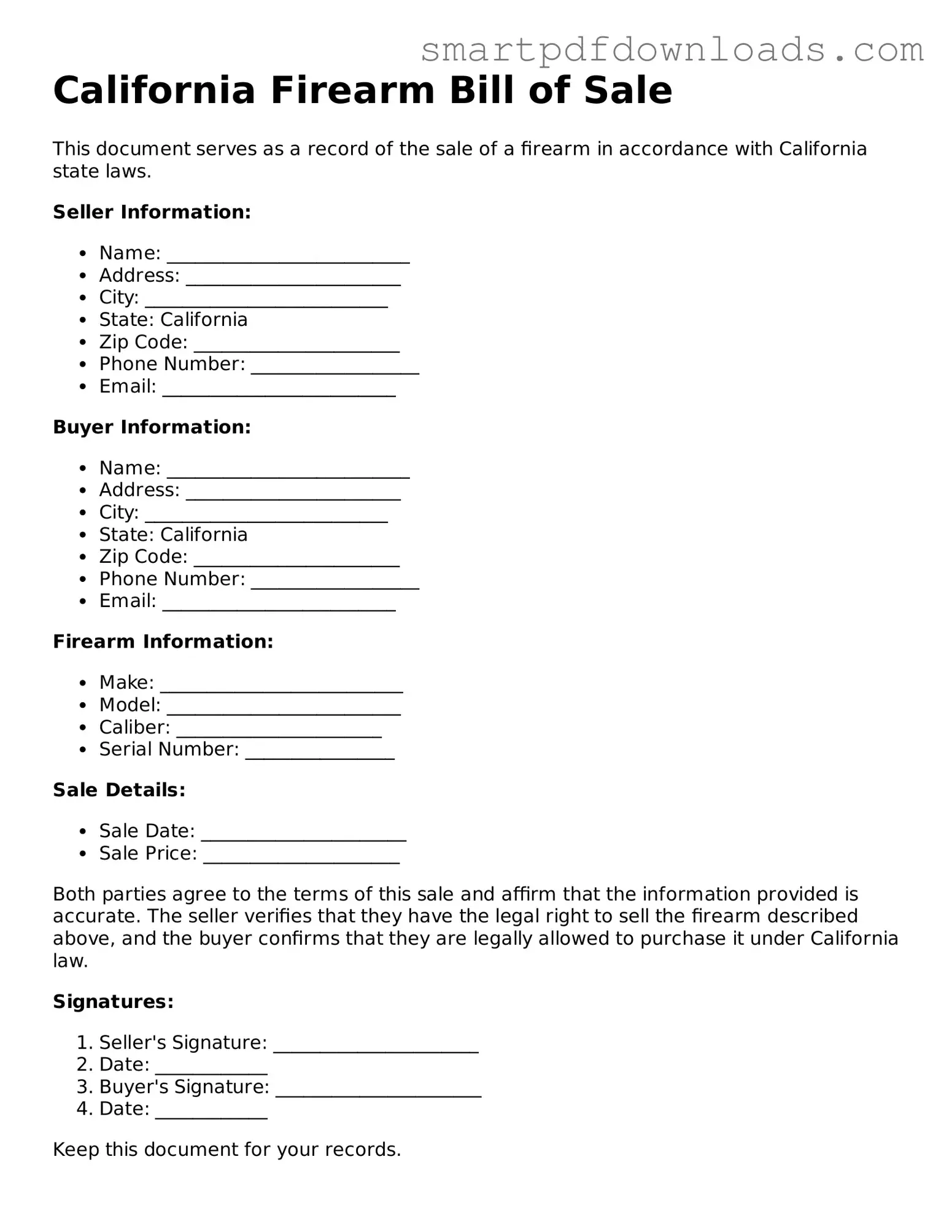California Firearm Bill of Sale
This document serves as a record of the sale of a firearm in accordance with California state laws.
Seller Information:
- Name: __________________________
- Address: _______________________
- City: __________________________
- State: California
- Zip Code: ______________________
- Phone Number: __________________
- Email: _________________________
Buyer Information:
- Name: __________________________
- Address: _______________________
- City: __________________________
- State: California
- Zip Code: ______________________
- Phone Number: __________________
- Email: _________________________
Firearm Information:
- Make: __________________________
- Model: _________________________
- Caliber: ______________________
- Serial Number: ________________
Sale Details:
- Sale Date: ______________________
- Sale Price: _____________________
Both parties agree to the terms of this sale and affirm that the information provided is accurate. The seller verifies that they have the legal right to sell the firearm described above, and the buyer confirms that they are legally allowed to purchase it under California law.
Signatures:
- Seller's Signature: ______________________
- Date: ____________
- Buyer's Signature: ______________________
- Date: ____________
Keep this document for your records.
